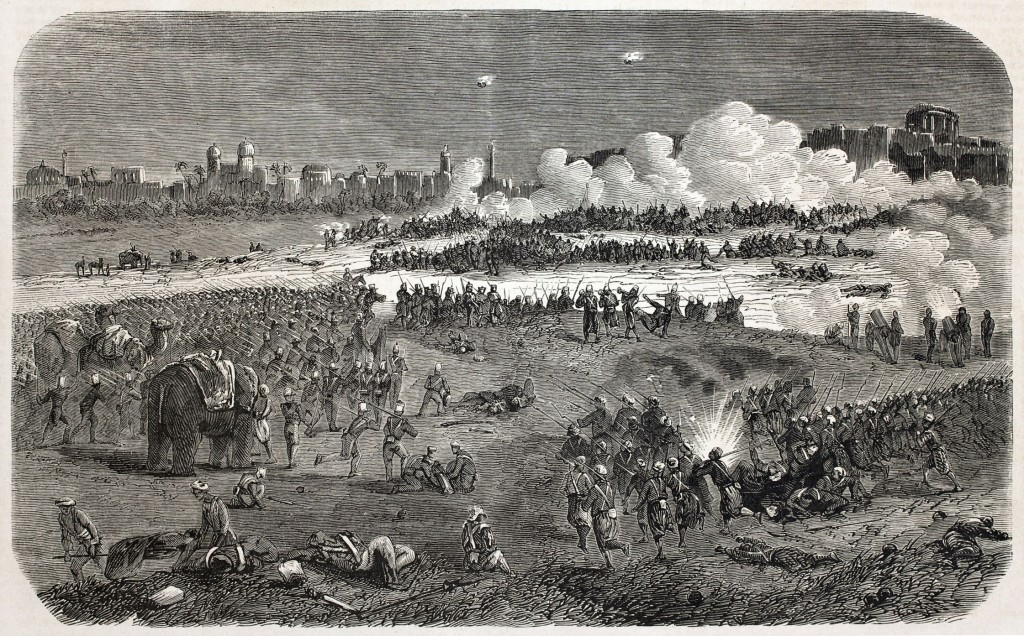From 1750 to 1850, a unique set of coins proliferated in Central India, with little symbols and rough structure. Yet, the historical derivation goes much deep. Here is an attempt at time-travel.
The 18th Century was a very interesting time in the Indian history context, the Mughal empire after reaching the zenith in the previous century under Aurangzeb, had all but collapsed under a string of bickering successors. The Marathas. who had had just in a matter of decades gained ascendancy over a large tract of the subcontinent — from Peshawar (Pakistan) to Tamil Nadu, and from Bombay to Bengal on the east coast — lost the plot pretty swiftly too, especially after their rout by Ahmedshah Abdali in the Third Battle of Panipat in 1761. Close to the end of the century, the Marathas were a spent force, comprising of a loose confederacy of semi-autonomous states, like the Gaekwars, the Holkars and the Scindias. The Britishers, who had come in as traders in the garb of East India Company, were putting their plans in place from their base in the East to gain control in the new dynamics. They were rubbing their hands in glee at the opportunity that lay in front of them.
Thus, in a manner of speaking, there was no real government in the subcontinent; rebellion, loot and anarchy, was a matter of everyday life. The populace had to suffer numerous excesses in terms of constant wars, and an uncertain future. Also, several famines wrought by climatic patterns and ill-management of resources, had added to the woe of the people at large. The prices of commodities were inflated. This was the time, when regional principalities proliferated. As uncertainty loomed, everything became temporal, even currency. And this is where we come across the  intriguing and interesting phenomenon of Kachcha Paisa that can be loosely translated from Hindi as “temporary money”. This set of Kachcha Paisa forms one of the most fascinating sets of coins in the Indian Numismatical (study of coins for the ignorant) context not only from a purely historical perspective but also as a study of the social dynamics that were in play at that day and time.
intriguing and interesting phenomenon of Kachcha Paisa that can be loosely translated from Hindi as “temporary money”. This set of Kachcha Paisa forms one of the most fascinating sets of coins in the Indian Numismatical (study of coins for the ignorant) context not only from a purely historical perspective but also as a study of the social dynamics that were in play at that day and time.
Essentially, the first mention of such a currency comes in 1823, by John Malcolm, who makes a mention of similar copper coins that are rudely cut pieces, show of stamp on one side, the established value of which was continually changed by local officers for the purpose of illicit profit. These coins were purportedly localised, “won’t pass 2 miles where it is coined, with a character that is so deteriorated, that the value changed every 2-3 months”.
But before we come to the temporal money, it is important to understand that over the very many centuries in India, right from 6th Century BC from the punch-marked series of the Mahajanapadas, coins were prevalent in India. With the Mauryas, Guptas, Cholas, Delhi Sultans and finally the Mughals, coins proliferated through the very lowest denominator. With the Delhi Sultans enforcing tax payments in coins, the barter system was largely pushed into the background, existing largely in a community setup. The traditional forms of exchange, namely, supari (betel-nut), bitter almonds, and cowries, existed but were gradually being replaced with “pukka” currency. Thus, while you could still find a potter in a 17th century village to sell you a cooking-pot in exchange of a half-a-sack of grain, he’d rather prefer that you paid him in Hali Sicca, the Ankushi rupee or even the Chandori rupee. Continue reading
